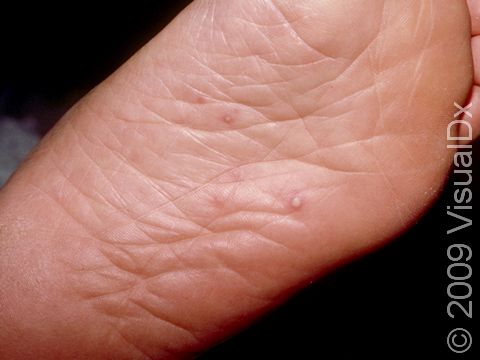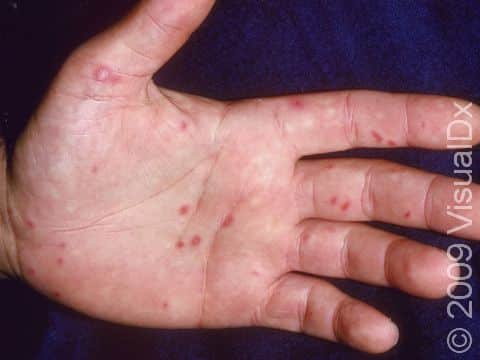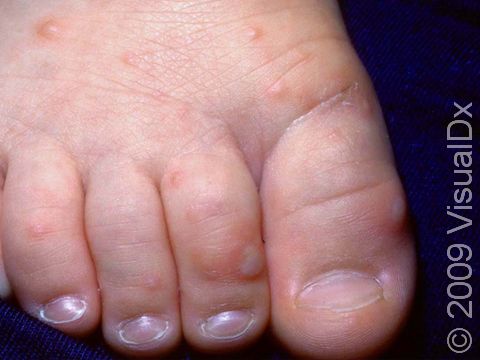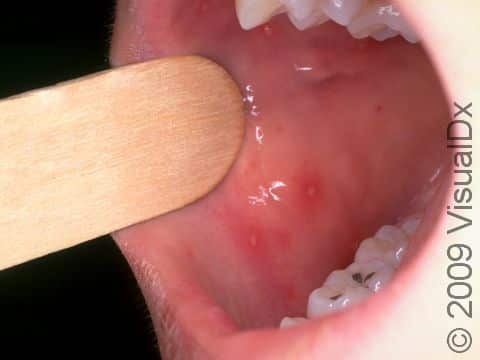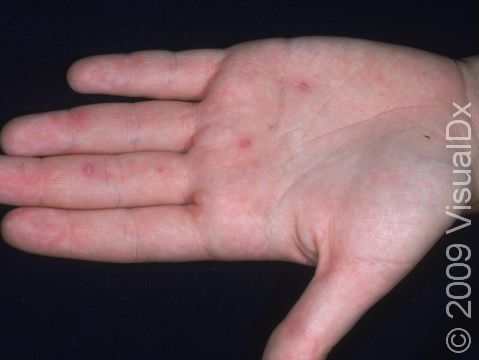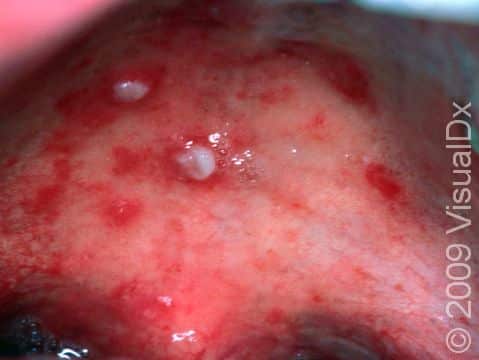Hand-Foot-and-Mouth Disease
Hand-foot-and-mouth disease is a suddenly appearing (acute), self-limited viral disease caused by viruses of the enterovirus group, particularly Coxsackievirus A16. The development (incubation) period from infection to symptoms is short, from 3–6 days. The disease is highly contagious and often spreads from child to child and then from child to adult. Spread of the disease occurs by means of direct contact with nasal and/or oral secretions and stool contact. Widespread (epidemic) outbreaks usually occur from June to October.
Complications from hand-foot-and-mouth disease rarely occur, but they may include pneumonia, inflammation of the heart or brain, or miscarriage in pregnant women who become infected.
Hand-foot-and-mouth disease is not related to foot-and-mouth disease seen in animals.
Who's At Risk?
Hand-foot-and-mouth disease most often occurs in infants and children under 10, but teens and adults can also get it. Once a child has been infected, he or she might be immune to a repeat infection by the same virus that caused the first infection, but infection with related viruses can still occur.
Signs & Symptoms
Hand-foot-and-mouth disease begins with fever up to 101 degrees Fahrenheit, sore throat, sore mouth, cough, headache, fatigue, loss of appetite, and, occasionally, joint pain. After 1–2 days, a rash appears.
Small, red areas of the lining of the mouth, tongue, gums, or throat develop into blisters and rapidly form sores with loss of tissue (ulcerations). Lesions develop a shallow, yellow-gray base and a red surrounding area. Lesions on arms and legs (extremities) begin as red, flat spots that produce oval or football-shaped blisters, surrounded with red coloration. Hand and foot lesions are common on the sides and backs of the fingers and toes. Palms and soles may also be affected.
The skin lesions associated with hand-foot-and-mouth disease may be painful.
In about a week, the rash will disappear and your child will feel better.
Self-Care Guidelines
Hand-foot-and-mouth disease is a self-limited viral infection, so it only needs to be treated for bothersome symptoms. To reduce viral spreading, do not rupture blisters. The virus may be present in a person’s stool for 1 month. Be careful to avoid passing the infection to other people by practicing good hygiene. Wash your hands and your child’s hands frequently, particularly after using the bathroom or diaper changes and before eating.
Although most pregnant women who become infected with hand-foot-and-mouth disease have no symptoms or just a mild illness, a woman infected shortly before delivery could pass the infection to her baby, who may become very ill. Therefore, any infected child should avoid contact with pregnant women, particularly in late pregnancy.
You may choose to keep your child out of school or day care, but it is not clear this will prevent others from becoming infected, as the illness probably infected others before symptoms were noticed.
Acetaminophen (Tylenol) or ibuprofen may be used for fever and pain. (Do not use aspirin for any child aged 18 years or younger.)
Be sure your child drinks plenty of fluids to stay well hydrated. The child may tolerate cold milk products better than fruit juices.
Treatments
Blood tests and procedures to identify the cause of the infection (cultures) are not usually done. If the doctor is concerned that the child might be infected with the bacteria Streptococcus (strep infection), a throat culture may be done.
Antibiotics do not help hand-foot-and-mouth disease. The doctor will likely recommend that you give the child fluids and something to relieve the pain.
Visit Urgency
See your child’s doctor if fever is present and is not brought down to normal by medication or if your child has a severe headache, stiff neck, irritability, reduced awareness (lethargy), or if he or she appears very ill.
References
Bolognia, Jean L., ed. Dermatology, pp.1256, 1273. New York: Mosby, 2003.
Freedberg, Irwin M., ed. Fitzpatrick’s Dermatology in General Medicine. 6th ed. pp.1374, 2051. New York: McGraw-Hill, 2003.
Last modified on October 10th, 2022 at 8:04 pm

Not sure what to look for?
Try our new Rash and Skin Condition Finder
